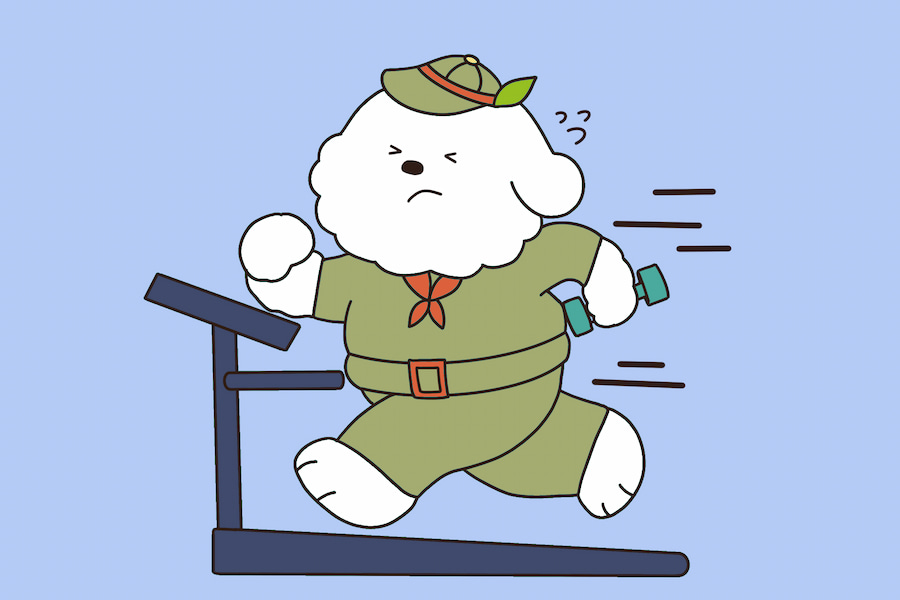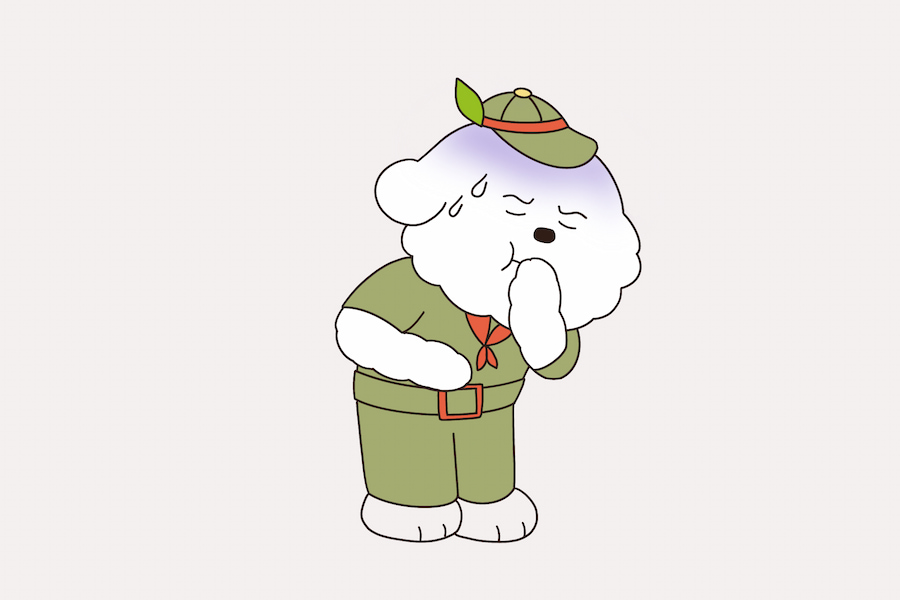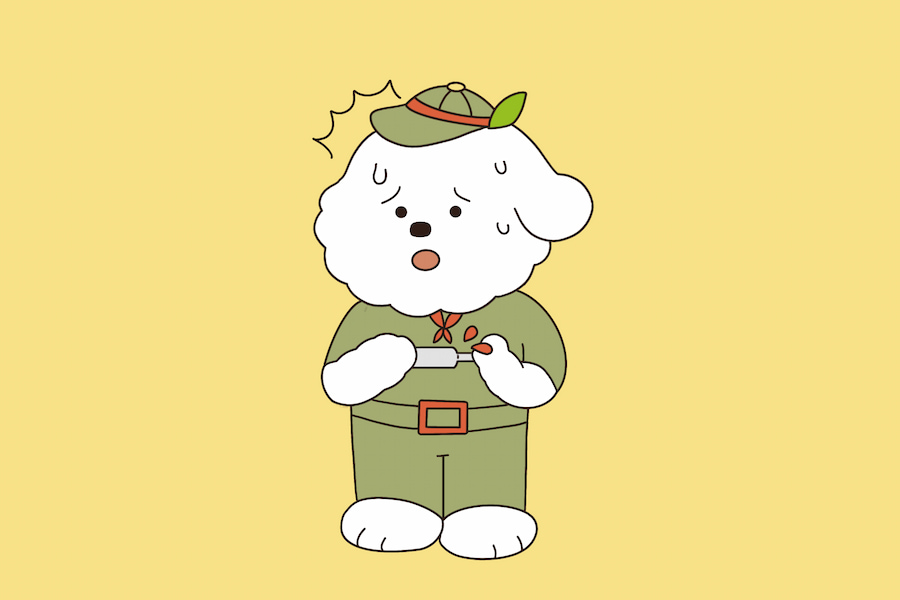Obesity in dogs can initially appear as a non-threatening body condition caused by variable eating habits of the pet but will eventually turn into a threatful disease and can affect their day-to-day functioning and also can have severe repercussions on their life expectancy if not treated rigorously.
A significant chunk of pet owners still do not realize the amount of health hazards and conditions an overweight dog can develop. This article is specifically written with a clear purpose in mind to raise awareness about obese dogs, dog obesity causes, how to prevent it and to provide a thoroughly researched resource for understanding this condition.
Let’s start with answering your question in multiple steps, as it will help you grasp the science and logic behind dog obesity more effectively and will help you take the next steps in the right direction!

What is Dog Obesity?
Obesity in dogs is a condition in which the overall fat percentage in the animal’s body exceeds the normal regulated limits suggested by experts, as per their age and other variable factors. To measure if a dog is over its normal fat limit, experts usually use their overall body weight as a metric. This can occur due to a direct relationship between body fat and body weight.

Dog obesity statistics show that approximately 30-40% of dogs worldwide are affected by obesity.
The reason behind the majority of obese dogs is overeating and lack of exercise. A dog is considered overweight at 10-20% above their ideally recommended body weight.
Severe cases are when a dog goes past more than 20% of their ideal body weight and, reaches a more serious stage of this condition and is termed obese. Its quality of life also gets reduced drastically.
In addition, fatty tissues are one of the main signs of obesity, and they generate oxidative stress. They play a critical role in inducing damage to body tissues that, in the long term, would contribute to several other diseases as well.
Besides these regular medical conditions, some breeds of dogs are naturally predisposed to being obese.
How to Know if Your Dog has Obesity
There are ways to determine if your dog is overweight without checking their weight. These things are key for Identifying the obesity with your dog.
Visible Weight Gain
When your pet dog starts appearing noticeably heavier and its waistline becomes wider than normal, it can be an early sign of obesity.
Difficulty Feeling Ribs
If you are not able to feel the ribs of your pet dog with a bare-hand pat, it may indicate an excess fat layer.
Dog Obesity Symptoms
Obesity, like almost every other disease, comes with its symptoms. Some of the most commonly found symptoms of obesity in dogs are:
Reduced Stamina
Dogs suffering from obesity will have difficulty breathing, especially during physical or outdoor activities; it can be a sign of reduced stamina due to extra fat.
Lethargy
Obese dogs will always be tired, sleepy, or sluggish during unusual hours and will be showing less interest in playing or being active; this can be a sign of lethargy.

Obese dogs have consistent lethargic patterns of behavior.
Joint and Back Problems
Dogs having joint issues or those who experience pain while moving are highly likely to be suffering from obesity. Carrying excess weight over a long period has usually affected their legs and made their joints stiff.
If you ever come across any of these symptoms in your pet friend, immediately make your pet visit a veterinarian, who will do proper testing and will let you know about the next steps.
What Causes Obesity in Dogs?
The fundamental reasons for canine obesity come from energy intake vs. output imbalances in favor of consumption over expenditure. But that is certainly not the only consideration. Some of the driving causes of obesity in dogs are as follows:
Age
When an adult animal ages, its lean body mass also declines, resulting in lesser total everyday energy needs.
Moreover, an important factor to bear in mind for all dog owners is that any animal’s metabolic rate decreases slightly as they get older. Meals should be given, keeping this in mind. Studies suggest that for each year of age, the odds of obesity increase, which means that older dogs are at higher risk of being obese.

During the aging process, the food intake must not be reduced to disproportionate limits else it will gain more weight.
Neutering
When a dog is neutered, it results in a loss of circulating sex hormones, which resultantly, slows down the animal’s metabolic rate and exposes the animal to the risk of being obese.
Ovariectomy in dogs also results in modified feeding patterns. Energy intake should be reduced by 30% after ovariectomy to maintain optimal body weight.
Quality of Diet
Bad dietary decisions at the owner’s end also contribute to excessive weight gain in canines. The number of meals and snacks per day and the animal’s presence when owners prepare or eat their meals all contribute to canine weight gain. Dogs that are fed high amounts of cheaper dog foods are at more risk of being obese than dogs that are fed low amounts of reliable and premium quality.
Hypothyroidism
Hypothyroidism is a condition in dogs where the thyroid gland of the animal (which is naturally responsible for producing thyroid hormones and controlling metabolism) stops working normally and becomes inefficient.
This condition can affect a dog’s obesity level in a bad manner because dogs with hypothyroidism commonly experience fluid retention, which can contribute to an increase in body weight.
Also, excessive fat deposits are reported among dogs suffering from this medical condition.
Medications
Some prescription drugs, which are beneficial in treating certain medical conditions in dogs, can also lead to weight gain, if used for extended periods. For example:
- Prednisone, which is a commonly prescribed medicine to manage inflammatory conditions in dogs, can lead to extreme weight gain, if used for a longer time period.
- Phenobarbital, which is often used to control seizures, can increase appetite, leading to overeating and weight issues.
- Glucocorticoids are essential in treating autoimmune diseases and allergies, but they can also contribute to excessive abdominal fat and overall weight gain.
As an established animal health expert, I always recommend seeking professional help before taking any crucial step related to your dog’s health and safety. Remember, a vet can always guide you better than any online influencer.
What are the Risks Associated with Dog Obesity?
Dog obesity can cause significant health problems and conditions that can deeply affect their quality of life. This shows the magnitude of this disease, as more than 60% of dogs in the US are obese.
Some of the commonly attributed risks of dog obesity include:
Luxating Patella
Obesity increases the pressure on dog’s knees, which increases the risk of luxating patella.
Heart and Respiratory Issues
An overweight dog’s heart is constantly under strain, as it must exert extra effort to circulate blood. The added weight creates additional pressure, increasing the risk of serious heart disease such as congestive heart failure.
Dogs above their ideal weight also tend to have difficulty breathing, particularly when exercising or in warm weather.

Naturally, breeds such as the Bulldogs and Pugs face breathing problems when they carry excess weight.
Increased Risk of Diabetes
The presence of an excess amount of body weight in a dog is a dangerous sign of diabetes. When there is too much fat in a dog, it does not respond well to insulin, making stable sugar levels hard to control.
Reduced Liver Function
When the liver accumulates too much fat, a condition known as hepatic lipidosis occurs that causes liver failure and can be fatal if not reversed.
Increased Risk During Surgeries
Obese dogs have a higher risk of anesthesia-related problems, too — that’s because body fat can cause drugs to be metabolized differently.
Skin Problems
Fat folds on obese dogs create a perfect environment for skin infections and irritation. With the dog being overweight, dermatitis could morph into something chronic.
Gastrointestinal Issues
Overweight dogs suffer far more digestive troubles, such as constipation, and can even be at risk of pancreatitis – a painful, potentially life-threatening condition.
How to Prevent Obesity in Dogs?
Obesity in dogs can be avoided by feeding them according to their dietary needs, ensuring regular exercise, and paying close attention to these health guidelines:
Proper Feeding Practices
To maintain a healthy weight, follow the feeding guidelines provided by the pet food manufacturer, which will help you feed your dog appropriately based on their age, size, and activity level. We strongly recommend avoiding free-feeding and instead implementing a feeding schedule. Provide your dog with a balanced, high-quality brand of food that suits their life stage, and limit treats to no more than 10% of their daily caloric intake. Avoid feeding your dog human food, as it can be calorie-dense and contribute to weight gain, making table scraps a big no-no.

Lee&Pol’s dried pollock is not only low in calories but also low in salt, making it the perfect treat for dogs struggling with obesity!
Exercising Regularly
Regular exercise is crucial for keeping your dog’s weight under control. Engage in daily play and, depending on your dog’s breed, aim for a 30-60 minute walk every day to help burn calories. Using interactive toys or engaging in obedience training not only provides mental stimulation but also helps burn off energy. Consistent exercise is key to maintaining a healthy weight for your dog.
Monitoring Weight and Health
Regularly monitoring your dog’s weight is essential in preventing obesity. Weigh your pet consistently to track any changes over time, allowing you to catch any issues early.

Learning how to assess your dog’s body condition score (BCS) can also be helpful in determining their ideal weight.
Regular visits to the vet are important for monitoring your dog’s overall health and receiving advice on maintaining a healthy weight.
Adjusting Diet and Exercise with Age
As your dog ages, their diet and exercise needs will change. Puppies are in a growing stage and require more calories and an increased exercise routine to burn off extra energy. Senior dogs, on the other hand, usually have slower metabolisms and are less active, so they may need a diet of lower-calorie food and a more frequent (and possibly gentler) exercise routine.

Dog Breeds Prone to Obesity
Some dog breeds have a harder time staying fit than others. Just like humans, certain dogs are more likely to gain weight, which can lead to health problems if not managed.
Let’s explore which breeds are most prone to obesity and why they might be more likely to gain extra pounds:
Pugs
Pugs are one particular breed that has a lower metabolism than many other dogs. Unfortunately, due to diets that aren’t curated for specific dogs and breeds, obesity has been normalized in dogs.
Labrador Retrievers
Labradors have a deleted gene which makes them more inclined towards food. This is a big reason why they are always ready to eat. Also, Labradors cannot recognize when they feel full, so they overeat and put on weight.
Basset Hounds
Basset Hounds is another dog breed that is highly at risk of being obese. Because of their lazy attitude and unique body shape, bassets are prone to IVDD, which makes exercising a long shot for them. These dogs have tiny legs, which is why they avoid longer physical sessions.
What Should I Feed to My Overweight Dog?
If your dog is not in his ideal weight range, adjusting their diet accordingly can help in achieving that healthy weight. An overweight canine needs a readjustment of its intake regimen if any attempt for it to lose unwanted pounds and recover optimum health is to be made possible.
First off, select a weight loss or weight management formula of high-quality, low-calorie dog food. Choose a variety that says weight control or light.
Ensure that it contains lean proteins, healthy fats and fiber in the meat product & also vegetables/grains to cut down on calorie intake while getting all necessary nutrients for a good fat-burning foundation.
What are the Best Foods to Feed an Obese Dog?
Dried Pollock
Dried pollocks can be one of the best meals for your overweight canine, as it is a low-fat, surprisingly low-calorie food that contains quite considerable protein. Dried pollock is rich in Omega-3, Methionine, niacin, and tryptophan. These are great at improving the liver health, blood vessel health, and muscle of dogs.

Lee&Pol’s products offer the best treats by combining low-calorie, high-protein dried pollock, ideal for dogs with obesity, along with freeze-dried fruits and vegetables!
Blueberry
Blueberries are an excellent treat, especially if your dog is overweight. They tend to be low in calories, high in antioxidants and contain a fair amount of fiber.
Kabocha Squash
Kabocha squash can be great for overweight dogs. It is low in calories and high in fiber making it a smart option to feel fuller.
Apple
Fiber-rich apples are the jackpot food for obese dogs due to their low calories. But dog owners have to make sure they remove the seeds and core before feeding apples to their pet friends.
Beet
Beets are also rich in nutrients and fiber. They are good for digestion and the general health of the dog.
Conclusion
In the end, all of the things discussed above need to be tackled to help stem this tide and return many overweight dogs to happier, healthier ones. Obesity is not a matter of mere aesthetics but an important health condition that can shorten your dog’s life and impair the quality of life.
You can help combat and prevent obesity by choosing low-calorie foods high in fiber, watching portion sizes carefully, and keeping your pet active. Your dog will need regular trips to the vet, too, for them to keep an eye on your canine and change their routine when needed.
FAQ
Overweight dogs have a shorter life span as compared to normal dogs. A normal-weighted male dog lives for about 16 years on average. Whereas, the life span of an overweight dog is about 14 years.
If your dog is not eating much but is still getting overweight, you may want to schedule a vet appointment to have your dog checked for health conditions like hypothyroidism and Cushing syndrome.
Studies have shown that at least 20% of all dogs, regardless of their age, have shown signs of distress due to excess fat. Also, overweight pets have worse scores in quality of life and emotional disturbance.



